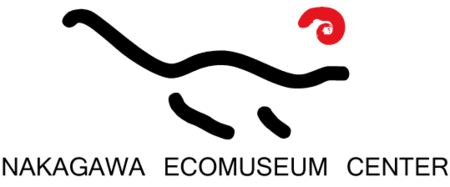Field Trip
We will visit three classic Miocene and Cretaceous seep localities for the pre-meeting field trip. The trip starts on the early morning of June 10th, 2019 and ends on the evening of June 12th, 2019.
Schedule
10th June 2019
8:30AM Meeting at the Sapporo Station or Hokkaido University. The details of meeting point will be announced later.
Travel to Cenomanian (Late Cretaceous) seep along Kanajirisawa Creek in Obira Town.
Night: Accommodation in the Nakagawa Town (PONPIRA AQUA Hotel).
11th June 2019
Nakagawa tour! We will go to the Yasukawa and the Omagari seep sites (Santonian-Campanian, Late Cretaceous) with observation of channel-levee deposits. You can find well-preserved ammonoids, too. We also will go to Nakagawa Museum of Natural History.
Night: Accommodation in the Nakagawa Town (PONPIRA AQUA Hotel).
12th June 2019
We will go to Miocene seep locality in Morai area along the Sea of Japan coast.
Return to Sapporo in the evening.
Cost
30,000 Yen including accommodation and meals (dinners and breakfast) for two days.
Capacity
max 20 participants.
Locality information
We will provide field trip guide book at the meeting point. If you need some literatures before going for the trip, please do not hesitate to contact us. We can send you pdf files of some literature related to the sites.
Kanajirisawa Seep (Cenomanian, Late Cretaceous; Obira Town, Hokkaido)
Cenomanian seep site along the Kajirisawa Creek. Numerous seep carbonate bodies are exposed along the creek and forest road. Numerous large-sized lucinid bivalves and many silisified gastropods, mostly provannids and hokkaidoconchids, are available. The silicified provannids are often characterized by excellent protoconch preservation (see Kaim et al. 2008 and Kiel et al. 2008)!!
Yasukawa Seep (Campanian, Late Cretaceous; Nakagawa Town, Hokkaido)
Campanian seep site along the Abeshinai River in Nakagawa Town. There are several relatively small (less than 2 m wide) seep carboante bodies. Jenkins et al. (2007) and Jenkins and Hikida (2011) interpreted these bodies as sdiments of diffused seeps. You may find Nucinella and Acharax bivalves with hokkaidoconchid gastropods in/around the carbonate bodies.
Omagari Seep (Santonian-Campanian, Late Cretaceous; Nakagawa Town, Hokkaido)
Santonian-Campanian (most likely Campanian) seep site along the Abeshinai River in Nakagawa Town. Single islat in the Abeshinai River is a large (ca. 5m wide) seep carbonate body with abundant alleged vestimentiferan worm tubes. Tiny gastropods and brachiopods are available too. See details in Hikida et al. (2003) and Jenkins and Hikida (2011), Kaim et al. (2008; 2009).
Morai seep (Miocene, Neogene; Morai, Ishikari City, Hokkaido)
Miocene seep sites are exposed along the cost of the Sea of Japan. There are many colonies comprising vesicomyid, thyasirid and solemyid bivalves. Some of those bivalves have drill holes made by naticid gastropods (Amano, 2003). You can obtain some more information form Ishimura et al. (2005; in Japanese).
Acknowledgement
The field trip is supported by the Nakagawa Town and the Nakagawa Museum of Natural History. We appriciate for their support.

